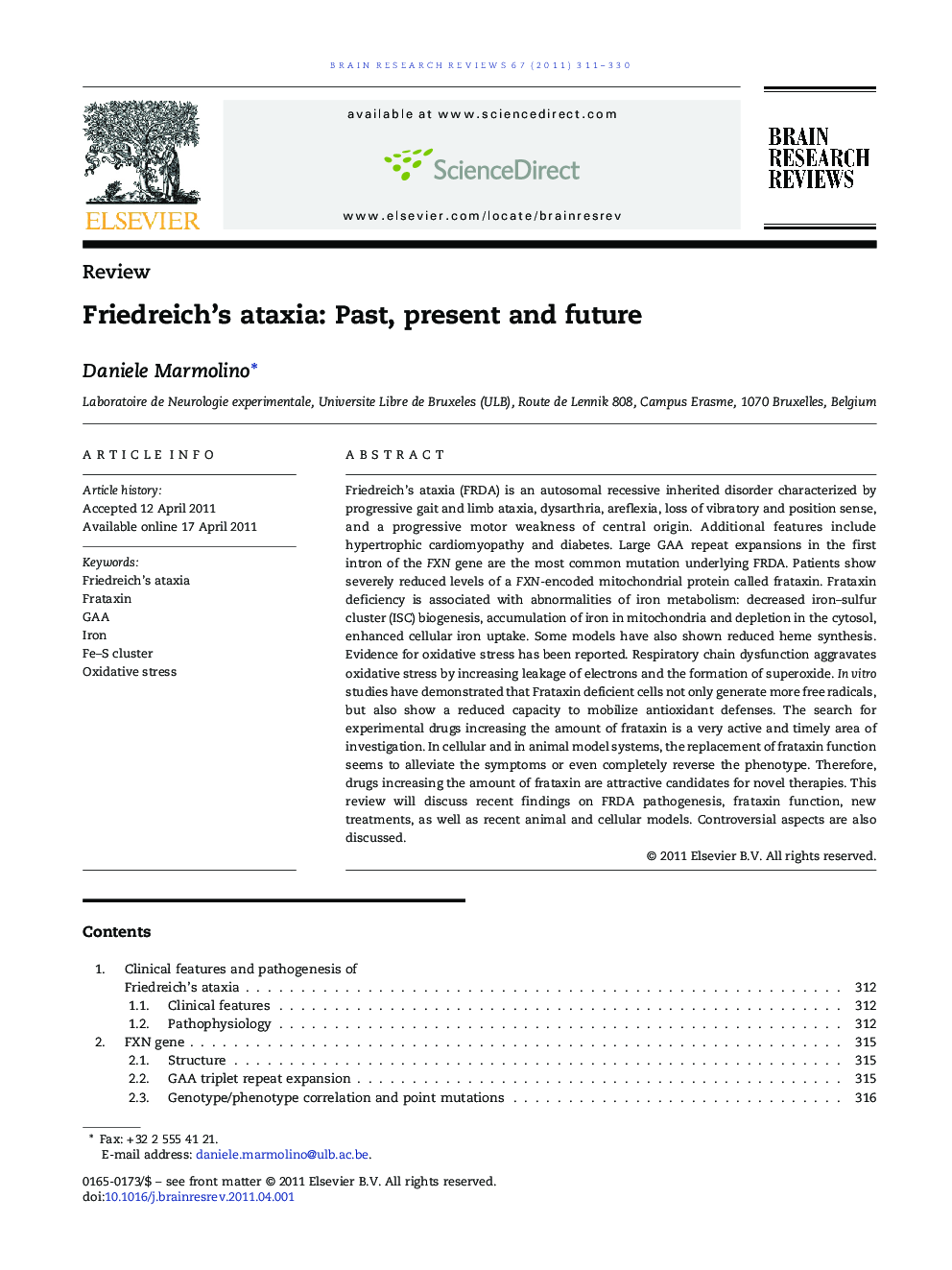| Article ID | Journal | Published Year | Pages | File Type |
|---|---|---|---|---|
| 6265975 | Brain Research Reviews | 2011 | 20 Pages |
Friedreich's ataxia (FRDA) is an autosomal recessive inherited disorder characterized by progressive gait and limb ataxia, dysarthria, areflexia, loss of vibratory and position sense, and a progressive motor weakness of central origin. Additional features include hypertrophic cardiomyopathy and diabetes. Large GAA repeat expansions in the first intron of the FXN gene are the most common mutation underlying FRDA. Patients show severely reduced levels of a FXN-encoded mitochondrial protein called frataxin.Frataxin deficiency is associated with abnormalities of iron metabolism: decreased iron-sulfur cluster (ISC) biogenesis, accumulation of iron in mitochondria and depletion in the cytosol, enhanced cellular iron uptake. Some models have also shown reduced heme synthesis. Evidence for oxidative stress has been reported. Respiratory chain dysfunction aggravates oxidative stress by increasing leakage of electrons and the formation of superoxide. In vitro studies have demonstrated that Frataxin deficient cells not only generate more free radicals, but also show a reduced capacity to mobilize antioxidant defenses.The search for experimental drugs increasing the amount of frataxin is a very active and timely area of investigation. In cellular and in animal model systems, the replacement of frataxin function seems to alleviate the symptoms or even completely reverse the phenotype. Therefore, drugs increasing the amount of frataxin are attractive candidates for novel therapies.This review will discuss recent findings on FRDA pathogenesis, frataxin function, new treatments, as well as recent animal and cellular models. Controversial aspects are also discussed.
Research highlights⺠Friedreich's ataxia neuropathy involves spinal cord, peripheral nerves and cerebellum. ⺠Impairment of Fe-S cluster biosynthesis and iron metabolism occurs in FRDA. ⺠The exact role of frataxin in ISC biogenesis is still controversial. ⺠Animal models recapitulating the pathological phenotype in human are needed. ⺠Therapies aim to increase frataxin and to block the downstream effects of frataxin deficiency.
